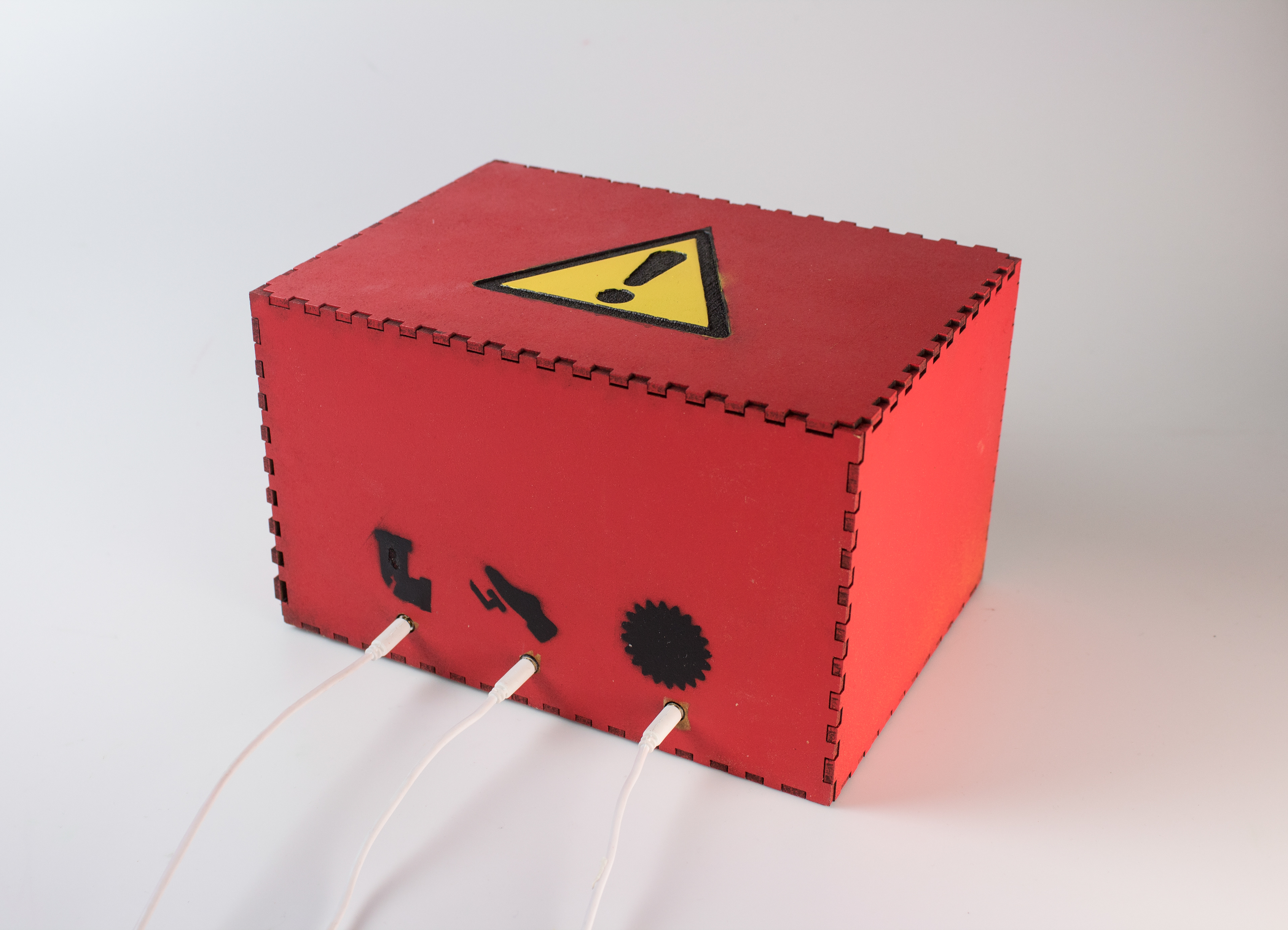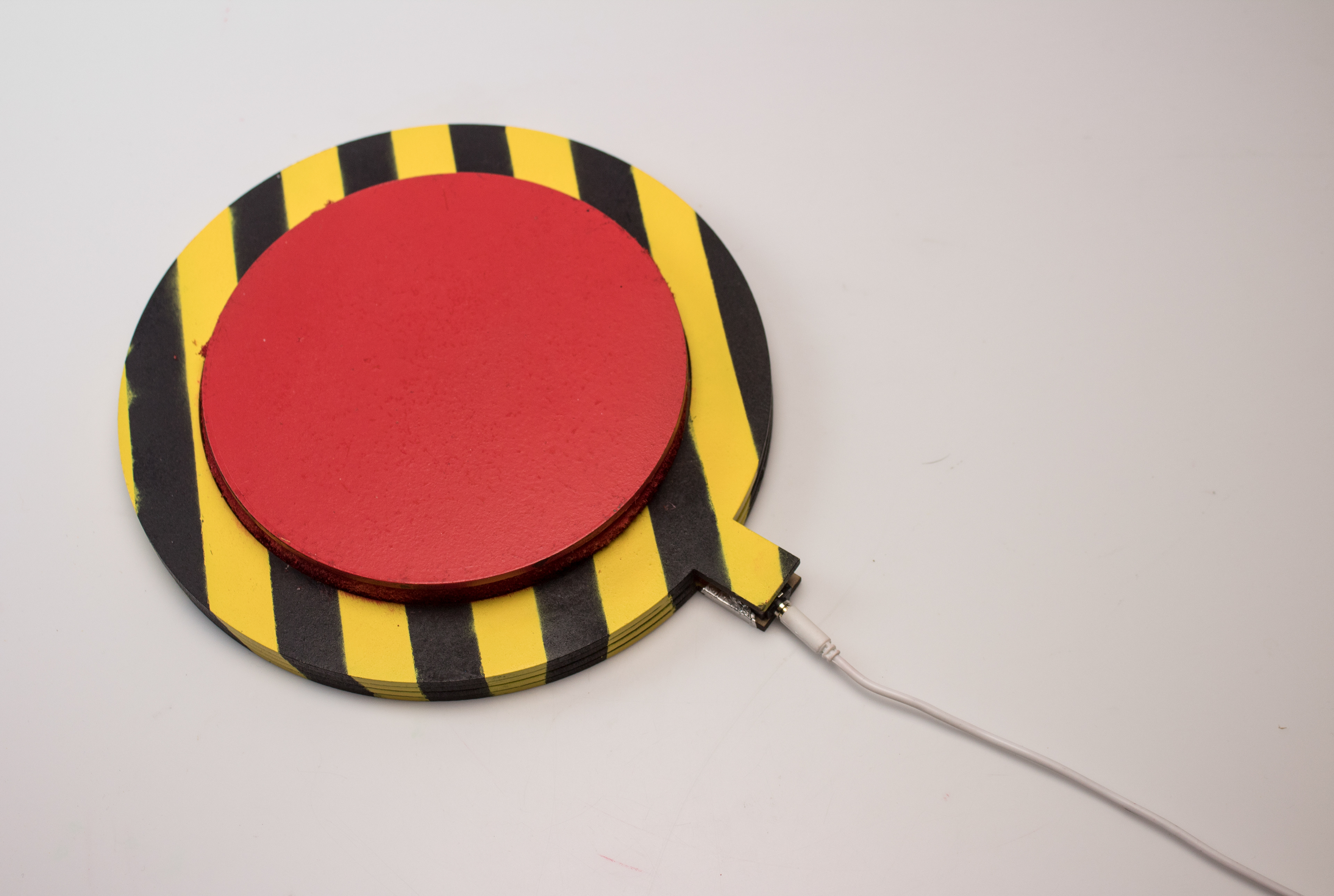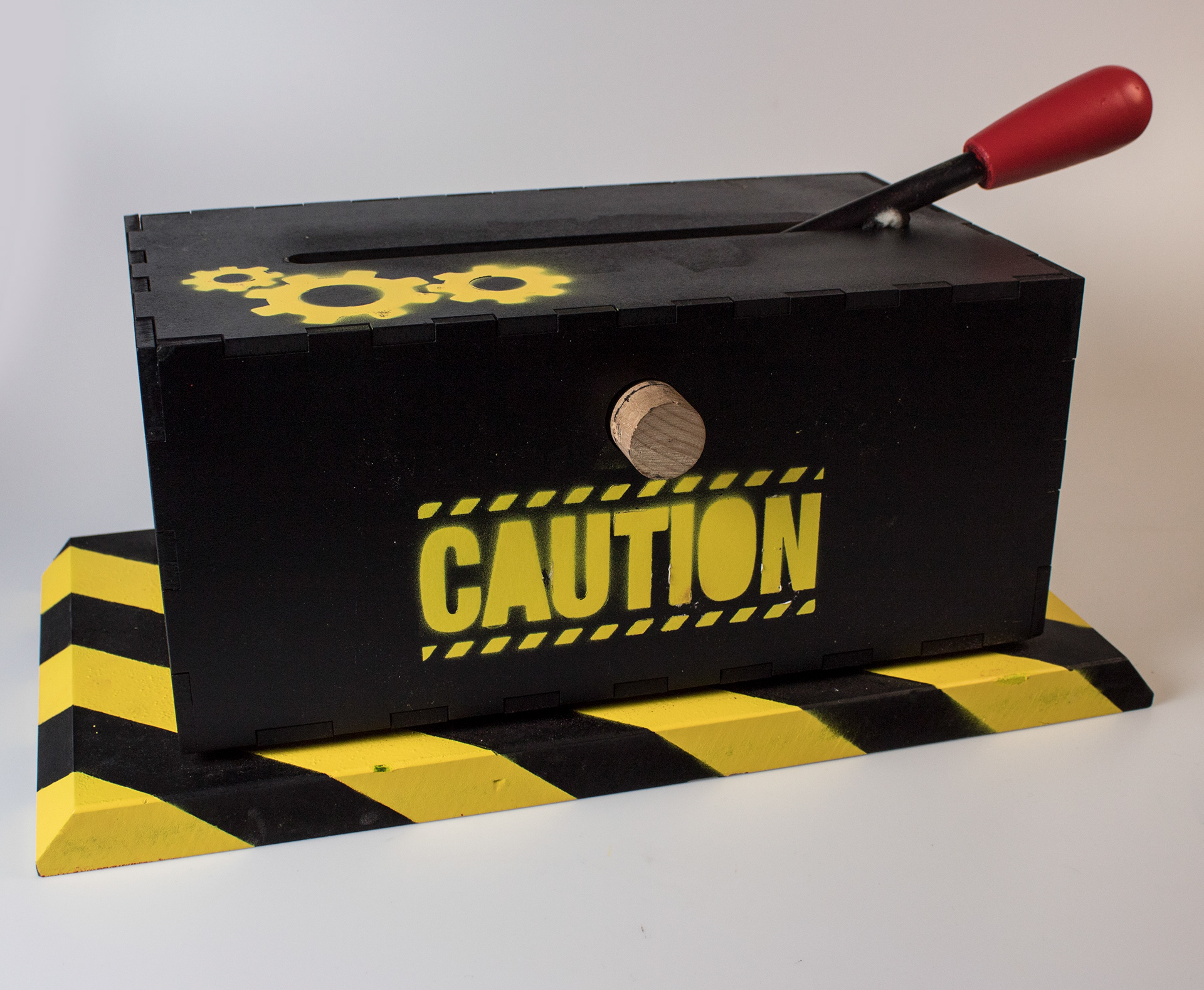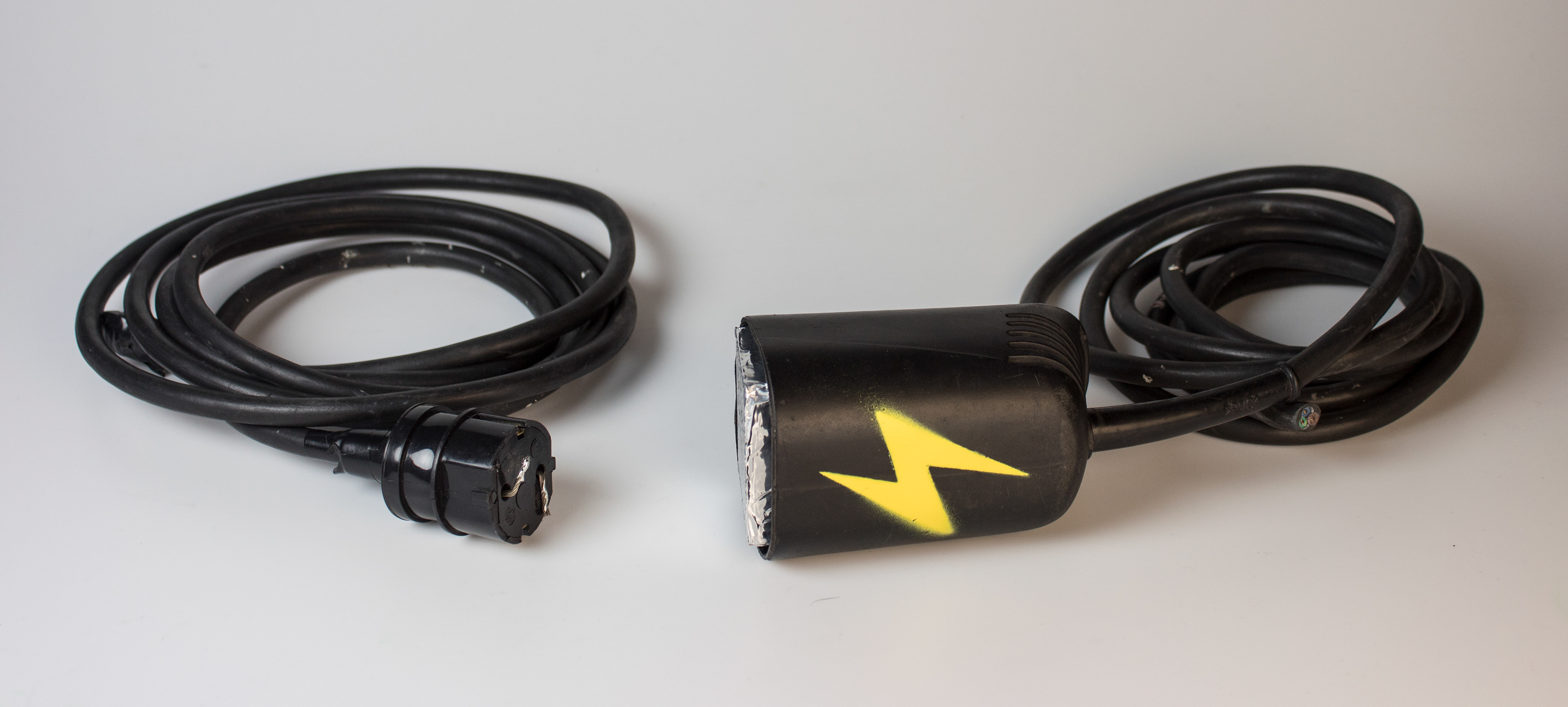Co-contributors
Haley Dabbs, Felix Linden, Markus Pamp, Erik Cronqvist, Elias Widqvist
My Contribution
Skills Developed
UX/UI design and implementation, physical prototyping, design process knowledge
Role on the project
Designing and administering user testing, constructing lo-fi and hi-fi prototypes using shop tools such as laser cutters, plastic formers, soldering equipment, and hand tools.
Original concept and inspirations
Inspirations
From the start, we wanted to design a game that relied on audio cues for game play. We studied games such as "Lurking" and 'Papa Sangre II' which utilize sound to guide players through an immersive dialogue and story.
Game Concept
As we moved into the design process, we decided that completing a game using multiple story paths, dialogue, and an entirely sound-oriented navigational system would be difficult to complete during the course. We retained sound cues as a key game play mechanic and created a whack-a-mole style game which implements distinct sound cues and short term memory to shape interaction.
Body storming and brain storming
To start brainstorming game-play mechanics, we created a low-fi game model using tape squares on the floor. I would press buttons on a keyboard that produced a sound which corresponded with a specific square. Players had to continuously jump on the squares until the sound stopped. From then on, they were supposed to associate that particular sound to that particular square
Major insights from initial prototypes
With no way to visually distinguish squares, it was difficult for players to remember which squares corresponded to which sounds. There was no tactile sensation when pressing down on the squares, which players found unsatisfying. Because of the delay in my response time when manually switching noises, users had delayed feedback when they did hit the right spot resulting in slower game-play.
A video from our first low-fi prototype.
Iterative prototypes
According to user feedback during the body storming phase, we began planning and building our initial prototypes. We initially planned to incorporate LED lighting as a way to indicate to users which pressure plates were 'active' when different sounds played. Prototypes were created using a pressure switch to close a circuit and provide feedback to a central arduino. Different types of padding were tested to find the best balance of durability and positive tactile experience.
Prototype Sketch
Initial Prototype
Testing Initial Prototype
Inside of the pressure plates
Inside of the pressure plates
Different plate sizes
A happy accident and moving into high-fi prototypes
A design flaw leads to a better game
A flaw that we addressed during our prototyping process was a difficulty in creating durable pressure pads. Because the game pads were made of weak material, they would break repeatedly. Players also found it more satisfying to stomp on the game pads than to step on them, putting them under greater pressure. But our prototypes repeatedly breaking actually helped us to find better, more varied modes of game play! One game pad's wires had come lose, so players had to manually plug and un-plug the wire to have input register correctly. Feedback from players indicated that this varied form of user-input broke up game play and made it more engaging.
Our final prototypes fully embraced this concept. We gamified everyday objects, such as levers, wheels, and plugs, by turning our user input into exaggerated versions of factory tools.
Images of our high-fi prototypes






Final game and demo video
The concept
The plot of the finished game is that the player is a solo factory worker maintaining machinery. The sounds of different machinery (electricity, gears, gas, a saw) correspond to different user inputs. When users hear the sounds, they must quickly press corresponding input to shut it off. The game gets more difficult, with more sounds sounding at once, until the user doesn't reach an input in time and the factory explodes. The final score is the wages earned for the day.
Game play demo
This video was created to demonstrate game play and mechanics of 'Last Day at Work'. The plot of the video is that a professional 'Last Day at Work' player, Chad Smith, is training for entry into the Osaka Olympics, and taking part in an interview where he explains the experience of playing the game and its various mechanics.
